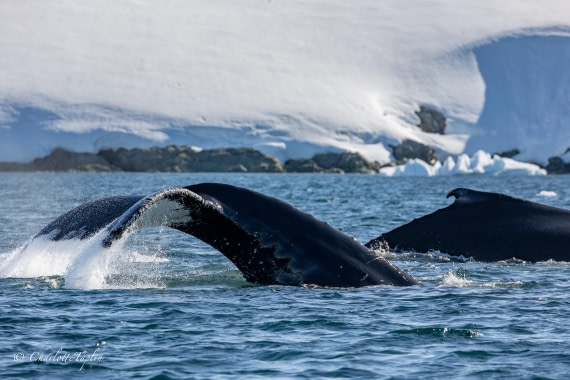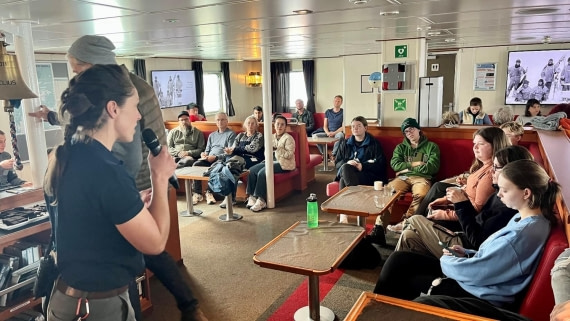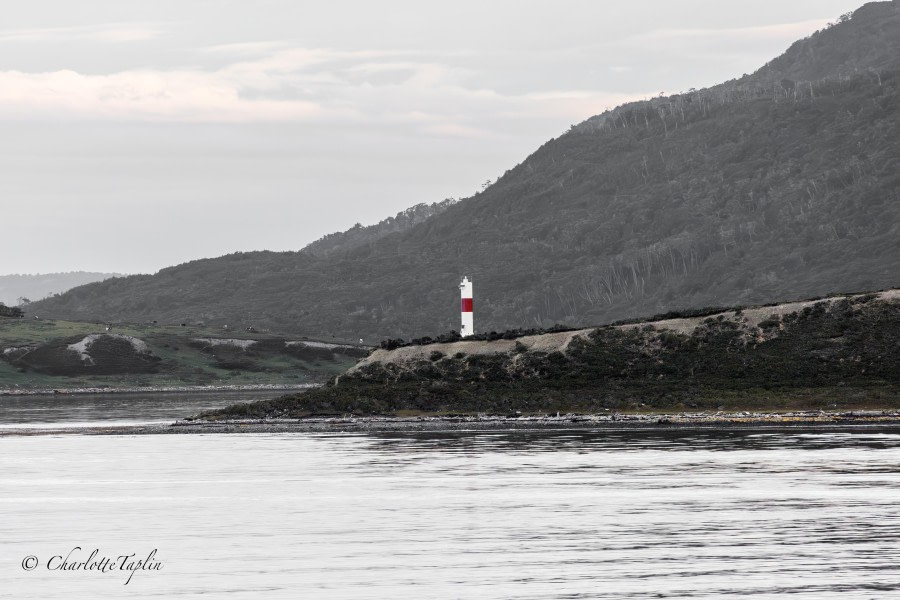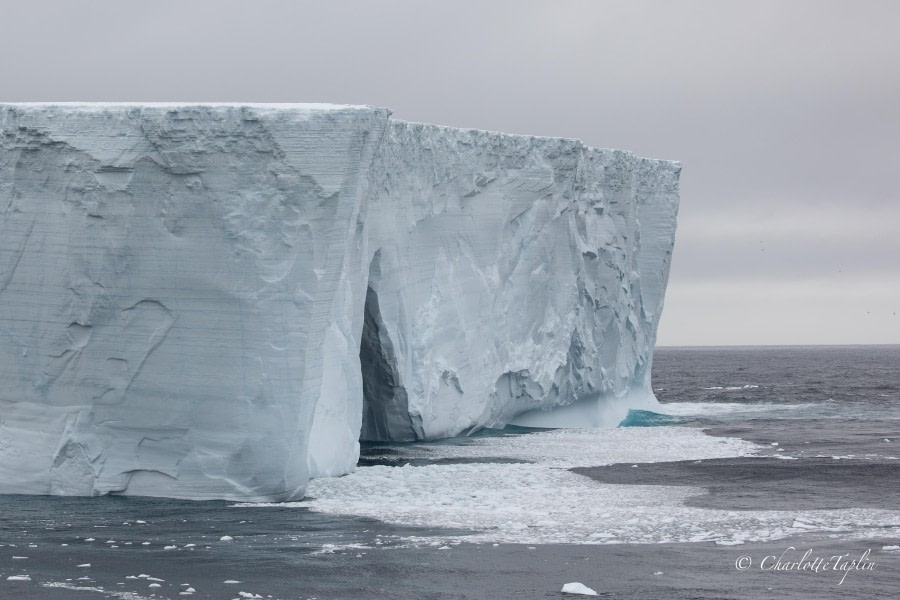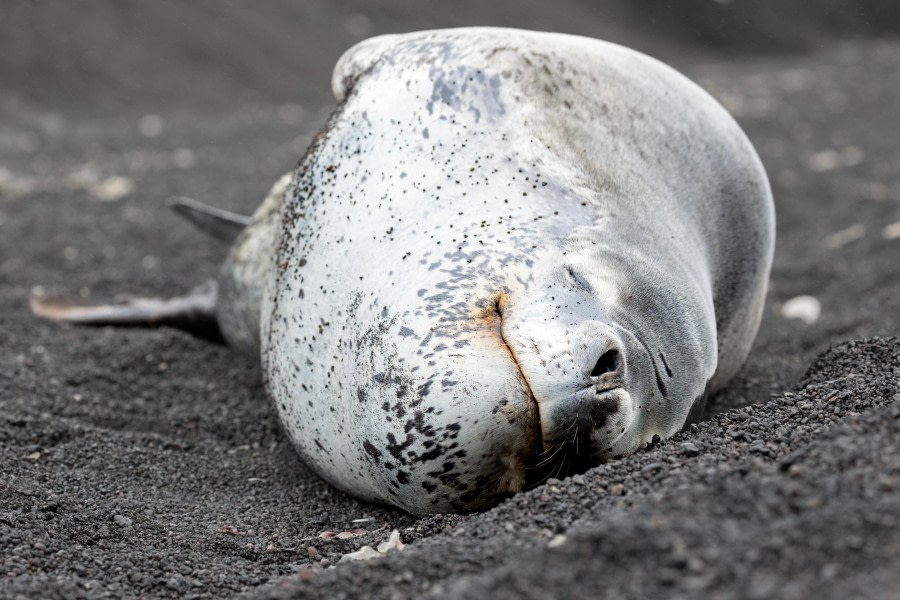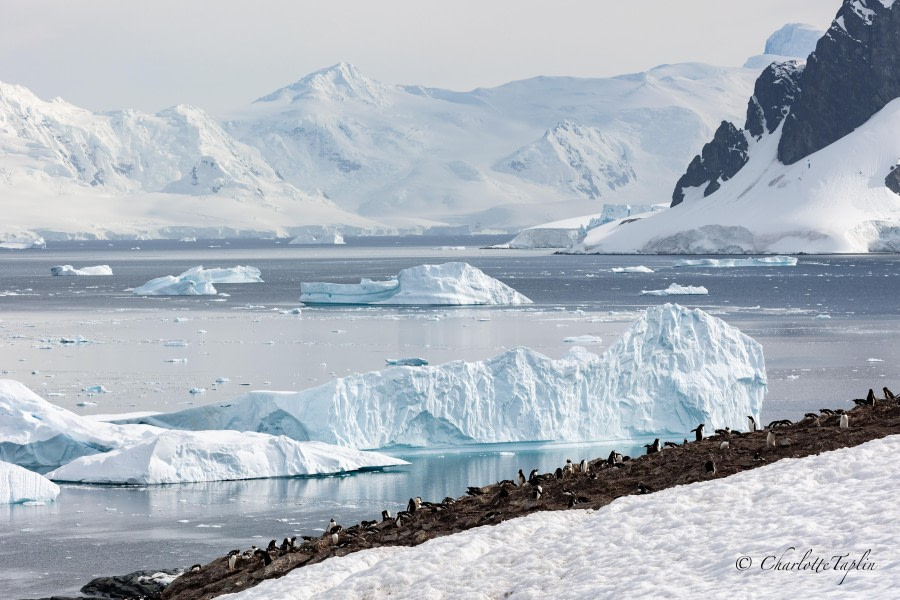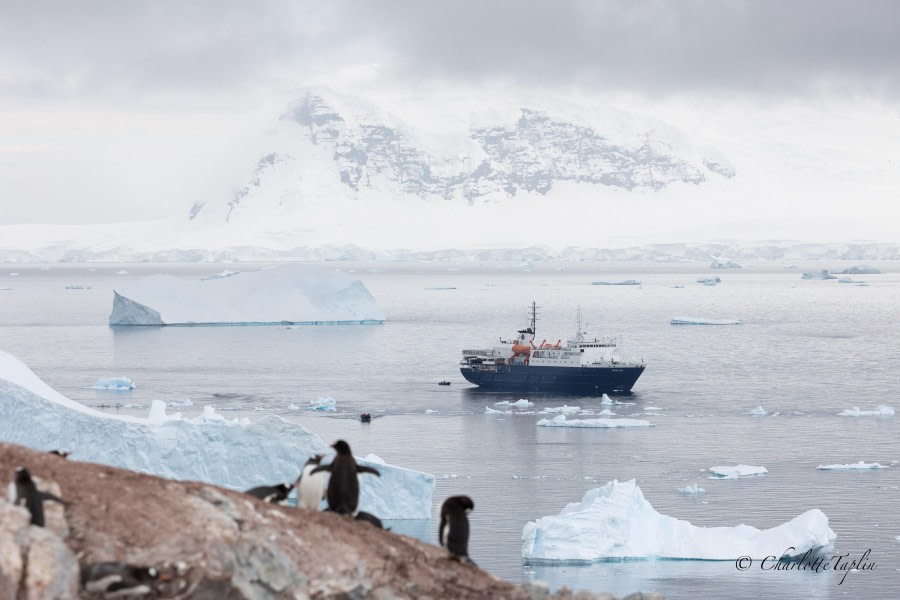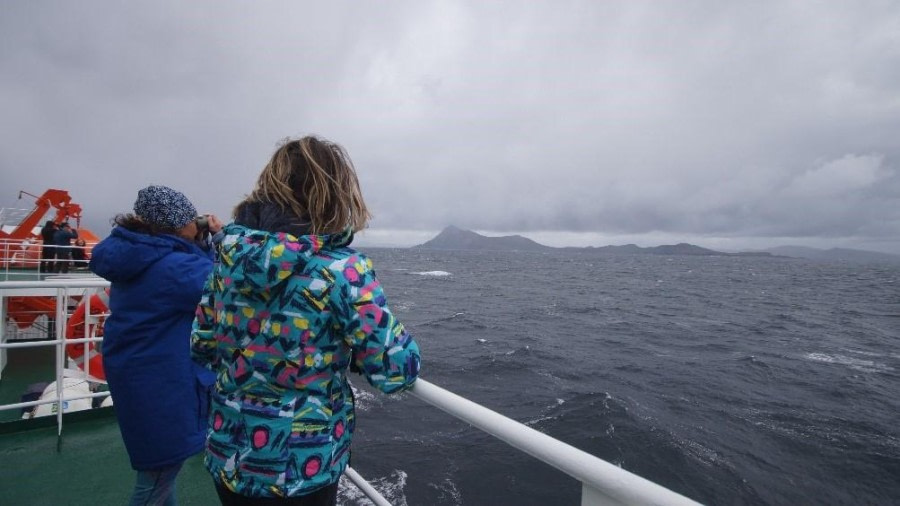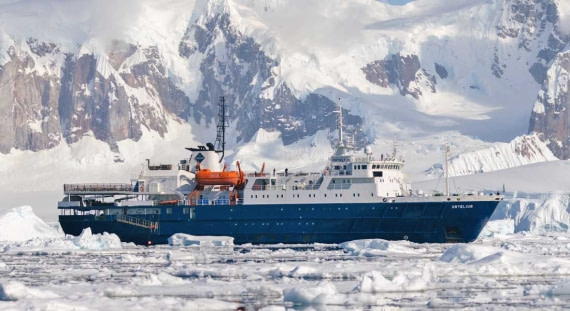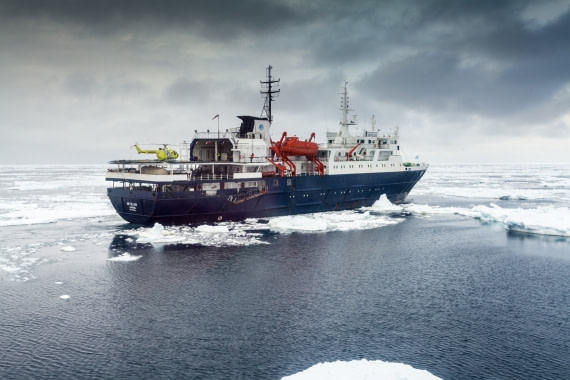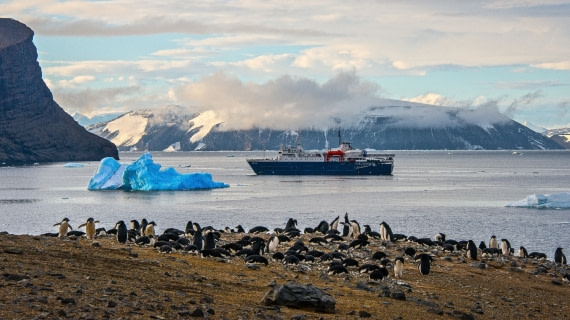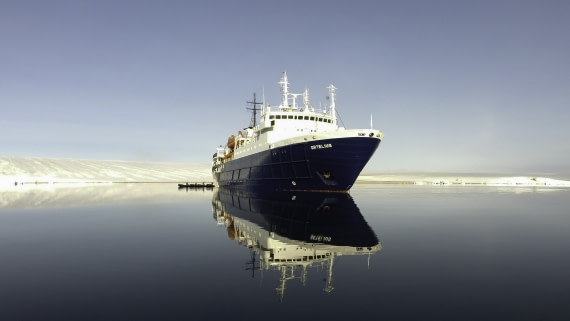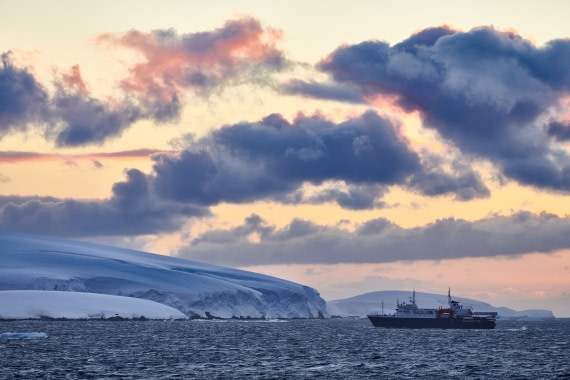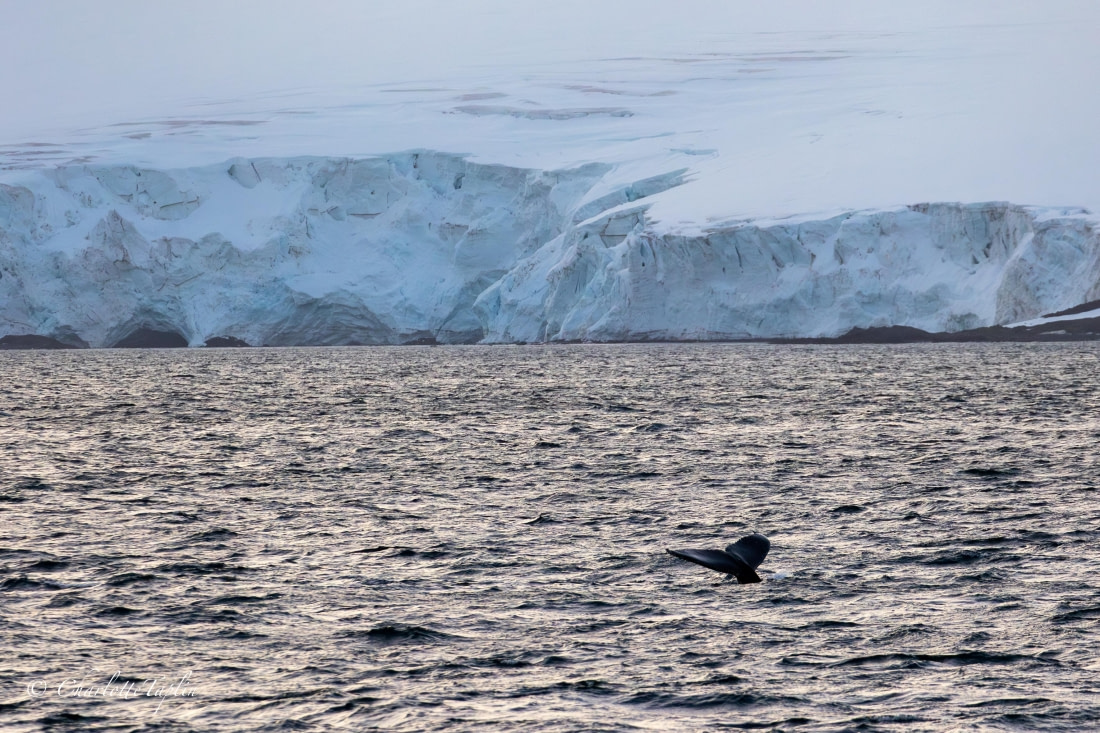| Datum: |
11.01.2024 |
| Positie: |
65°10,3'S / 64°07,2'W |
| Wind: |
SW4 |
| Weer: |
P. Wolk |
| Luchttemperatuur: |
+2 |
Onze dag begon met een vriendelijk weksignaal van onze expeditieleider Marcel. Na een stevig ontbijt waren we klaar voor actie. Vanaf 9 uur 's ochtends begonnen we met inschepen in onze Zodiacs en gingen we op weg naar Peterman Island, een 1 km lang eiland met een ijskap die 150 meter boven de zeespiegel uitsteekt. De belangrijkste attractie, samen met een Ezelspinguïnen kolonie, was een kolonie Adéliepinguïnen en blauwoog kuifaalscholvers. Ze hadden allemaal kuikens op dat moment, van verschillende leeftijden en groottes. Bovendien liet een bijna zuiver witte Reuzenstormvogel zich zien. We brachten er enkele uren door, en het werd behoorlijk frisjes op het einde.
Na de lunch was er een korte pauze. Vanaf 14.00 uur gingen we de Zodiaks in om te beginnen aan een Zodiac-cruise rond Pléneau Island. We begonnen onze tocht met een bezoek aan een zeeluipaard die rustte op een ijsstroom, die kapitein Per had gespot vanaf de brug. Daarna reden we met onze Zodiacs rond het eiland door kleine kanaaltjes die erg ondiep waren. Onze Zodiac-bestuurders navigeerden de Zodiacs heel goed door de ondiepe en smalle kanalen tussen Pléneau en het naburige eiland. Plotseling bevonden we ons in een kleine baai die gedeeltelijk bedekt was met snel ijs, en op en rond dat ijs lagen overal Weddellzeehonden verspreid.
Ze sliepen en rustten op het ijs, een perfecte plek voor hen om uit te rusten, veilig voor roofdieren zoals orka's omdat die niet in staat zouden zijn om de ondiepe baai binnen te gaan. Nadat we ze intensief hadden bekeken, gingen we verder rond het eiland en kwamen we terecht op een enorm ijsbergkerkhof. Wat een fantastische plek! IJsbergen in verschillende vormen en maten waren hierheen geduwd door de wind en de stroming en kwamen nu samen in wat aanvoelde als een ijssculpturenpark. Sommige leken blauw, maar de meeste waren wit, en de passagiers en gidsen genoten van het kijken naar de patronen en vormen die waren gecreëerd.
Na drie uur buiten in de koude wind, keerden we terug naar Ortelius. Marcel vertelde over onze plannen voor de volgende dag, Charlotte vertelde over aanpassingen van pinguïns, Galina over skuas en Fritz introduceerde de Adéliepinguïn en de Zuidpoolkip. Al deze vogelsoorten hadden we 's ochtends al gezien.
We zaten gezellig in de bar, toen we plotseling vanaf de brug het bericht kregen dat er vijf Orka's in de verte waren gespot. Twee ervan waren mannetjes, herkenbaar aan de lange rugvin. De groep orka's was vlak bij een Bultrug. De bultrug braakte, dat betekent dat hij uit het water sprong, waarbij hij bijna zijn hele lichaam liet zien en met een grote plons terugviel. De Bultrug deed dit heel vaak en liet ons denken dat de walvis waarschijnlijk de bedoeling had om de orka's van zich af te houden door harde geluiden te maken en zijn kracht te tonen.
Veel van de passagiers keken naar de orka's vanaf de brug, terwijl sommige dappere zielen vanaf de boeg keken in de bijtende koude wind. De mensen buiten werden beloond voor hun veerkracht toen een van de orka's recht op de Ortelius afkwam en onder de boeg door zwom. Na deze fantastische ontmoeting waren we in opperbeste stemming en klaar om de Open MIC avond te beginnen in de helikopterhangar van Ortelius.
Aan het begin en het einde zong het expeditieteam een zeemanslied. Tussendoor waren er 14 presentaties door de bemanning en passagiers, variërend van artistieke shows tot dans-, gitaar- en zangoptredens. Er heerste een geweldige sfeer en we hadden zoveel plezier. Onze gasten waren dolblij. Bedankt aan Paolo voor het organiseren van deze geweldige show! Rond middernacht was de show afgelopen en gingen we met een grote glimlach op ons gezicht naar bed.

